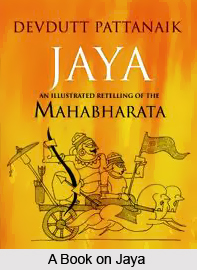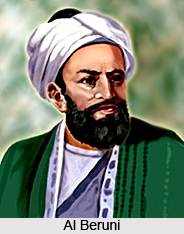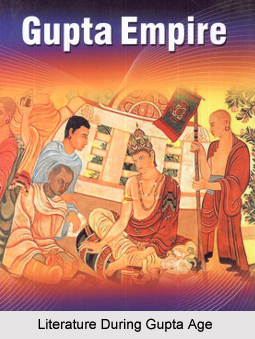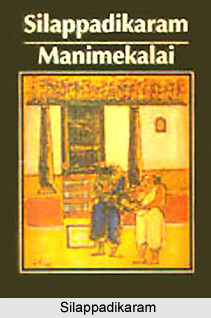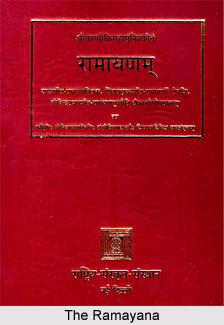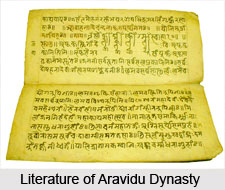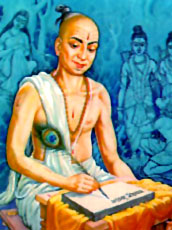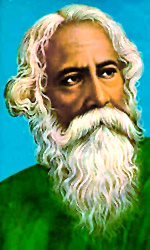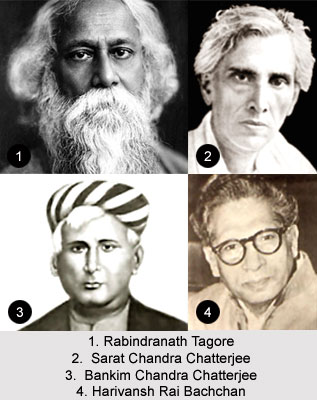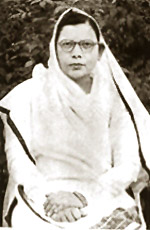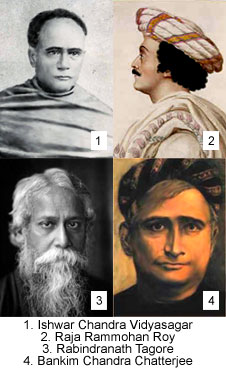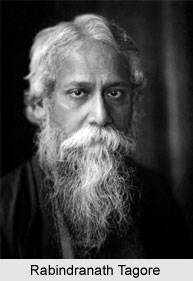 Development of novel in Malayalam literature was made possible by the rise of a sufficiently independent class of readers and writers. Appu Nedungadi`s `Kundalatha` (1887) is arguably the first original novel in Malayalam. However, the first significant novel in Malayalam literature is Chandu Menon`s `Indulekha` (1889). The English lineage of the novel is acknowledged in the novel`s subtitle: English novel Matiriyilulla Oru Katha (A Story in the Manner of the English Novel). Chandu Menon has written that he initially meant to translate Benjamin Disraeli`s `Henrietta Temple` (1836) into Malayalam, but, having struggled with the subtleties of an alien culture, he abandoned the project in favor of writing one on his own, depicting a familiar story. The fact that Chandu Menon`s novel deals with the decline of the feudal, Brahminical culture in Kerala also explains the rise of the novel form in Malayalam. This is because one of the necessary pre-conditions for the flourishing of the novel genre is the emergence of an educated middle class. Menon`s Indulekha dramatizes the resistance of a progressive woman named Indulekha, who is being pressured into marrying the lecherous Brahmin Suri Namboothiri, who represents the corruption of feudalism, its caste oppression, and polygamy. While feudalism controlled art and kept it limited to self-serving ritual forms, caste prohibited literary production because education itself was prohibited to the lower castes. The Brahmins maintained a belief that the untouchables would pollute the sacred language, Sanskrit. The gradual breakdown of such structures of oppression opened up the culture and made the rise of the novel possible. Chandu Menon`s heroine persists in her educated belief (she is an ardent student of the English language) and eventually weds her lover, Madhavan, in the process defeating the Brahmin, who is shown as an ineffective oppressor. Many of the social evils depicted in the novel have disappeared in independent India, partly due to the forceful representation of these problems in new literary forms.
Development of novel in Malayalam literature was made possible by the rise of a sufficiently independent class of readers and writers. Appu Nedungadi`s `Kundalatha` (1887) is arguably the first original novel in Malayalam. However, the first significant novel in Malayalam literature is Chandu Menon`s `Indulekha` (1889). The English lineage of the novel is acknowledged in the novel`s subtitle: English novel Matiriyilulla Oru Katha (A Story in the Manner of the English Novel). Chandu Menon has written that he initially meant to translate Benjamin Disraeli`s `Henrietta Temple` (1836) into Malayalam, but, having struggled with the subtleties of an alien culture, he abandoned the project in favor of writing one on his own, depicting a familiar story. The fact that Chandu Menon`s novel deals with the decline of the feudal, Brahminical culture in Kerala also explains the rise of the novel form in Malayalam. This is because one of the necessary pre-conditions for the flourishing of the novel genre is the emergence of an educated middle class. Menon`s Indulekha dramatizes the resistance of a progressive woman named Indulekha, who is being pressured into marrying the lecherous Brahmin Suri Namboothiri, who represents the corruption of feudalism, its caste oppression, and polygamy. While feudalism controlled art and kept it limited to self-serving ritual forms, caste prohibited literary production because education itself was prohibited to the lower castes. The Brahmins maintained a belief that the untouchables would pollute the sacred language, Sanskrit. The gradual breakdown of such structures of oppression opened up the culture and made the rise of the novel possible. Chandu Menon`s heroine persists in her educated belief (she is an ardent student of the English language) and eventually weds her lover, Madhavan, in the process defeating the Brahmin, who is shown as an ineffective oppressor. Many of the social evils depicted in the novel have disappeared in independent India, partly due to the forceful representation of these problems in new literary forms.
Chandu Menon`s Indulekha set the tone for the future development of the novel in Malayalam. Novelists now began debating social issues through their elaborate probing into the individual experience of characters who were drawn from contemporary society. This literary trend had shown its first signs in Malayalam as early as during the eighteenth century (as it did in Europe), when the poet Kunchan Nambiar satirized society and its mannerisms and inequities. Had he written a prose narrative, it would have been called it a novel. In the absence of the print culture, prose fiction had to wait until the final years of the nineteenth century.
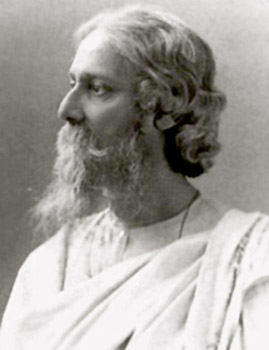 C. V. Raman Pillai was the second major novelist to emerge in Malayalam literature. His Walter Scott-inspired historical novels about the Travancore dynasty, Marthanda Varma (1891) and Dharmaraja (1911), made up for the late blooming of the genre. He produced grand historical romances about the different Travancore kings and war heroes who stood up to British imperialism. In his Dharmaraja, actually a sequel to Marthanda Varma, C. V. Raman Pillai follows up on the historical events that ended with the execution of a clan of King Marthanda Varma`s enemies.
C. V. Raman Pillai was the second major novelist to emerge in Malayalam literature. His Walter Scott-inspired historical novels about the Travancore dynasty, Marthanda Varma (1891) and Dharmaraja (1911), made up for the late blooming of the genre. He produced grand historical romances about the different Travancore kings and war heroes who stood up to British imperialism. In his Dharmaraja, actually a sequel to Marthanda Varma, C. V. Raman Pillai follows up on the historical events that ended with the execution of a clan of King Marthanda Varma`s enemies.
In Dharmaraja, two descendants from the clan return disguised as wandering monks seeking revenge at the new king and to take over the throne of Travancore, but the conspiracy is spoiled by the king`s lieutenant, Kesava Pillai, who himself becomes the central character in the third part of the saga, Rama Raja Bahadur. The historical context is that of the various annexations and incursions of Tipu Sultan into the kingdom and the persistence of ethnic dissent, which leads Travancore into accepting the hegemony of the British. Very much in the manner of Walter Scott`s romances, C. V. Raman Pillai also creates an elaborate human drama grounded in history, yet full of realistic characters.
Following in the tradition of C. V. Raman Pillai, several historical novels were written. Pallath Raman`s `Amrita Pulinam` and Appan Thampuran`s `Bhoota Rayar` and Bhaskara Menon (the first detective novel) deserve mention. Sardar K. M. Panikkar`s `Paranki Padayali` (The Portuguese Soldier), `Dhumakethuvinte Udayam` (The Comet of 111 Omen), and `Kerala Simham` (The Lion of Kerala) are also important works of lower sensibility in presenting Kerala`s encounter with the colonizers and imperialists. The range and popularity of the early novels helped the construction of a culture of the novel in Malayalam literature.
C.V.Raman Pillai`s first satirical novel, `Premamrutam`, led to the generation of yet another series of limitations. During this time, translations of novels from world literature began to appear, further enhancing the credibility of the genre. Besides Nalappat`s classic translation of `Les Miserables`, several other translations of John Bunyan, Maxim Gorky, Thomas Hardy, Dostoevsky, Tolstoy, and Rabindranath Tagore elevated the position of the novel in Malayalam.
The resurgence of the novels as an important literary genre was the result of the various political transformations that were taking place as a reaction to Western Humanist tradition, increasingly drawing its energy from Marxist philosophy and aesthetics. By the 1930s, a whole new school of writers, known as progressive writers, had come into existence. Three young critics, Kesari Balakrishna Pillai, M. P. Paul, and Joseph Muntasseri, became the theorists of the school. Having understood the great potential of realistic fiction, these critics theorized about the new role of Malayalam literature in an era of Western literary and cultural paradigms.
